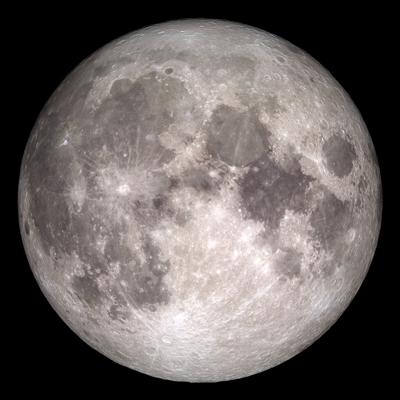
|

|
Back at the university, I took a course on the future. It was the late ’60s; I had three elective credits to spend; and my mentor in the English Department1 was teaching this course as part of a general broadening of the Liberal Arts curriculum, which the student body was demanding. Because I wanted to be a writer of creative fiction, specializing in science fiction, learning about predicting the future seemed to be a fit. And, hey, the New Age movement was just taking off, and the subject would also include some of the less scientific, more mystical approaches to divination, such as the I Ching and Tarot cards.
We read various authors on their predictions, including Robert L. Heilbroner’s The Future as History. We studied issues related to observation and probability. And yes, I wrote a paper on the Tarot, more as a matter of comparative literature than as a useful means of prediction. Finally, we examined various predictive strategies related to economics and similar fields, along with their fallacies.
One of my key takeaways from the course is that the future is in flux. One fallacy of prediction that human beings routinely fall into is the “if this goes on …” form of prediction. You see it endlessly played out among trend spotters. “If housing prices keep rising, soon no one here will be able to afford a house.” The same thoughts and fears have driven the value of tech stocks and dot-com stocks in the past, along with the price of tulip bulbs and shares in the South Sea Company. One curve drives all. We see this in economics all the time, too, where one theory or another follows a trend until it flies right out the window.
I saw this tendency demonstrated personally when I worked at the biotech company about fifteen years ago. Our genetic sequencing equipment and reagents had been used exclusively by both the Human Genome Project’s sequencing centers and by our own sister company, Celera, which had introduced “shotgun sequencing” to speed up the first draft of the genome.2 After that draft had been released, the vice president of our division, which had made and was continuing to make those reagents, showed his team a sales chart of the past couple of quarters with its bold upward trend. He predicted even greater sales in this product line for years to come.
In one sense, he was right. The success of the Human Genome Project might well have led to more and varied sequencing efforts in other laboratories. The inventory of other useful genomes—from mice and chimps as comparative human models, to thousands of different bacteria, plants, and pests as targets for finding genetic strengths and weaknesses—existed in the real world and would demand study now that we had broken through with the complete human genome. In another sense, however, he was wrong. The ready market for sequencing using these high-cost, first-generation machines was already saturated. Continued study of parallel genomes would demand lower-cost, faster and more versatile, next-generation machines—which our company was already working on.
This vice president had fallen into the “if this goes on” fallacy. Yes, if past sales were to keep up, the future for these instruments looked rosy. But other factors were in play. Predicting the future is a mix of having the right model—in this case, a simple tracking of previous orders against the company’s productive capacity at various levels of investment and expansion—and thought experiments to learn what is actually happening in the world and what other factors might affect the model. From there, you get into analysis of perturbations, positive and negative feedback loops, the model’s sensitivity to certain data sets, and other necessary adjustments.
Something similar seems to be going on with current questions in climate science and the political issue of anthropogenic global warming.3 For reasons of proprietary intellectual property, the models that various scientists are using to predict temperature rise around the world are closed to general view. That means their feedback and sensitivity settings may not be right, but nobody can say for certain. What we do know is that, while the models may be aligned with some anecdotal observations from around the world, and have been used to confirm trends seen in certain habitats, they have had trouble predicting past warming or cooling trends from previously available data. So how much are the modeler’s predictions predicated on the “if this goes on” fallacy?
Beyond learning to be wary of scientific predictions about the future, I also learned about the Tarot. This is a fascinating subject, because not only are the four suits—Swords, Wands, Coins, and Cups4—related to the suits of modern playing cards, but the structure of ten numbered cards plus group of face cards—Kings, Queens, Knights, Pages—corresponds to our modern King, Queen, Jack. With four suits of fourteen cards, the basic Tarot deck numbers fifty-six cards of what is called the Minor Arcana. The Major Arcana is a series of twenty-two cards—or more accurately, cards numbered zero to twenty-one, the way computer programmers count—depicting archetypal figures. These figures include The Fool and The Magician—who are the seeker’s beginning and end states in his or her journey among the arcana in search of knowledge—and other characters such as the Emperor, the Hierophant, and the Lovers, and figurative states such as Justice, Temperance, Death, and the Devil.
The Tarot supposedly originated with the Gypsies, the Roma, and thereby hangs a tale. As I learned much later from a book by Isabel Fonseca, Bury Me Standing: The Gypsies and Their Journey, these mysterious people didn’t come from Egypt or Romania at all, but had their origins in northwestern India in the early Middle Ages. They were wandering musicians and performers who migrated gradually through the Middle East and Eastern Europe. They brought with them one book, the seventy-eight cards of the Tarot deck. It was their explanation of the forces and personalities that drive human nature.
If you like, the Tarot is not so much a device of divination as a readymade collection of visual images going back to Indo-European myth and psychology. They remind the reader or seeker of important relationships worked out centuries and millennia ago. They are the dark soul of the ancient people from whom we sprang. They are to Europeans an underlying story—standing outside the Judeo-Christian tradition—in the same way that the etched symbols on turtle shells became the sixty-four hexagrams of the I Ching.
What else did I learn from that course on predicting the future? Not, after all, that you can’t do it. You certainly can predict the future in any number of ways—you just can’t be sure of the accuracy of your predictions. But the surest method is to pick a direction, the place you want to be or the end-state you wish to achieve, and start walking and working toward it.
You don’t predict the future. You make it happen yourself.
1. This was Philip Klass, who wrote delightful novels and short stories under the pen name William Tenn. He is not to be confused with Philip J. Klass, the aviation journalist and UFO debunker.
2. See Continuing Mysteries of the Genome from October 12, 2014.
3. See Science and Computer Modeling from June 29, 2014.
4. The Wands are sometimes called batons, rods, or staves, and the Coins are sometimes pentacles or disks.


